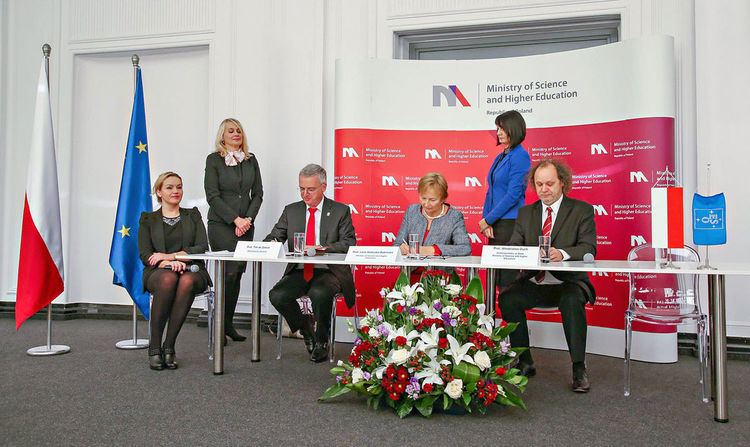 | ||
Education has been of prime interest to Poland's rulers since the early 12th century. The catalog of the library of the Cathedral Chapter in Kraków dating from 1110 shows that Polish scholars already then had access to western European literature. In 1364, King Kazimierz the Great founded the Cracow Academy, which would become one of the great universities of Europe. The list of famous scientists in Poland begins in earnest with the polymath Nicolaus Copernicus, who studied there.
Contents
- 1951 the present
- 1901 1950
- 1851 1900
- 1801 1850
- 1751 1800
- 1601 1650
- 1551 1600
- 1501 1550
- 1351 1400
- 1251 1300
- References
In 1773 King Stanisław August Poniatowski established the Commission of National Education, the world's first ministry of education.
After the third partition of Poland, in 1795, no Polish state existed. The 19th and 20th centuries saw many Polish scientists working abroad. The greatest was Maria Skłodowska-Curie, a physicist and chemist living in France. Another noteworthy one was Ignacy Domeyko, a geologist and mineralogist who worked in Chile.
In the first half of the 20th century, Poland was a flourishing center of mathematics. Outstanding Polish mathematicians formed the Lwów School of Mathematics (with Stefan Banach, Hugo Steinhaus, Stanisław Ulam) and Warsaw School of Mathematics (with Alfred Tarski, Kazimierz Kuratowski, Wacław Sierpiński). The events of World War II pushed many of them into exile. Such was the case of Benoît Mandelbrot, whose family left Poland when he was still a child. An alumnus of the Warsaw School of Mathematics was Antoni Zygmund, one of the shapers of 20th-century mathematical analysis.
Today Poland has over 100 institutions of post-secondary education — technical, medical, economic, as well as 500 universities — which are located in most major cities such as Gdańsk, Kraków, Lublin, Łódź, Poznań, Rzeszów and Warsaw. They employ over 61,000 scientists and scholars. Another 300 research and development institutes are home to some 10,000 researchers. There are, in addition, a number of smaller laboratories. All together, these institutions support some 91,000 scientists and scholars.
